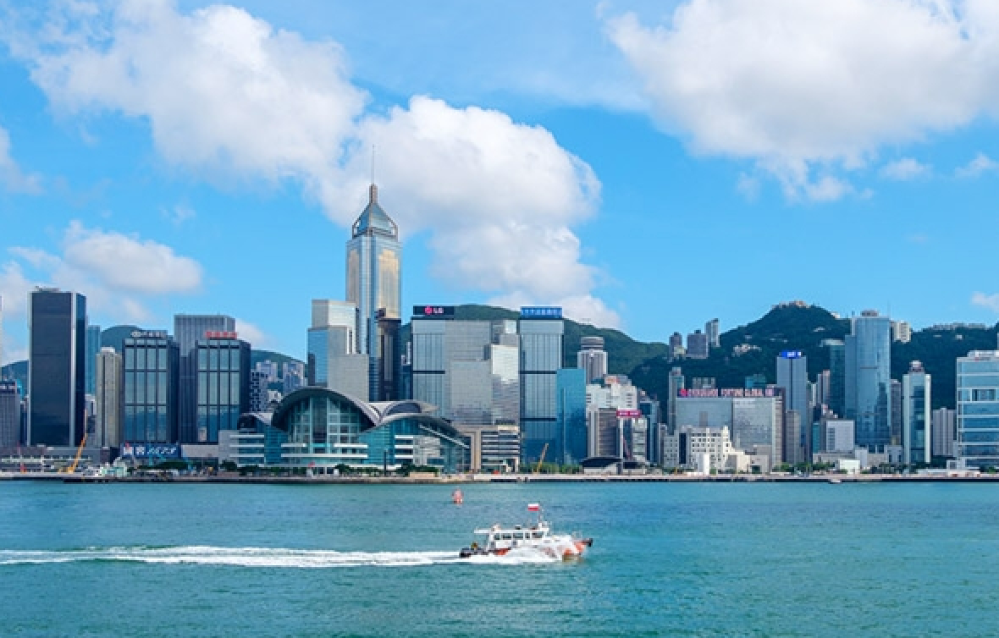HK’s economic prospects should be seen through multiple perspectives ![]()
![]()
By Tu Haiming
Earlier this month, global higher education network Quacquarelli Symonds (QS) released the 21st edition of the QS World University Rankings. A total of seven universities in Hong Kong were listed, of which five were among the top 100 universities in the world.
It is worth highlighting that six of the seven listed Hong Kong universities have improved their rankings, including University of Hong Kong (17th), up nine places from last year; Chinese University of Hong Kong (36th), advancing 11 places from last year; Hong Kong University of Science and Technology (47th), rising 13 places from last year; Hong Kong Polytechnic University (57th) and City University of Hong Kong (62nd), both eight places higher from last year. Hong Kong Baptist University ranked 252nd, leaping 43 spots from last year.
QS gives prominence to the internationalism of Hong Kong universities. Five to six universities rank in the top 100 among their peers in their proportions of international academics and students. For instance, CityU ranked 13th in the world in “international faculty ratio” and seventh in “international student ratio”. CityU and HKUST ranked sixth and 16th respectively in “citations per faculty”. These data speak volumes of the Hong Kong Special Administrative Region’s robust internationalism and research influence, the qualities that make it a distinguished education hub.
Just when critics warn about the city’s “diminishing internationalism”, these impressive rankings prove otherwise and once again attest to Hong Kong’s burgeoning internationalism.
Hong Kong is currently coping with a paradigm shift in both the internal and external environments when compared with four years ago, taking the initiative to adapt to changes. Amid such a paradigm shift in the global political landscape, the departure of a few old “patrons” is inevitable but does not connote a bleak future for the city. Indeed, an objective view of Hong Kong’s economic prospects can only be attained through multiple perspectives which all bode well for the city’s future.
Economic performance
Financial Secretary Paul Chan Mo-po announced earlier this month a 2.7 percent year-on-year economic growth in the first quarter of 2024, marking the fifth consecutive quarter of growth.
Chan brought up the “troika” that drives Hong Kong’s economic growth. In the first quarter, visitor arrivals increased to 11.23 million. Thanks to the rebound in the number of tourists, service exports remained a major driving force for economic growth in the first quarter, with a significant real growth of 8.4 percent year-on-year. Meanwhile, Hong Kong’s gross merchandise exports went up further in the first quarter, registering a real growth of 6.8 percent year-on-year. What’s more, the city’s private consumption expenditure rose slightly by one percent in the first quarter. These figures suggest an improvement in the city’s overall economic situation.
Talent flow
Critics blame the “brain drain” in recent years on the implementation of the National Security Law for Hong Kong (NSL). Such an allegation does not hold water.
The HKSAR government data indicate that Hong Kong’s population reached a peak of around 7.5 million in mid-2019. After dropping to 7.35 million over the following three years, the number bounced back to 7.5 million by the end of 2023.
There are two reasons behind the rebound, with the first being the return of Hong Kong residents from outside. Following the outbreak of the COVID-19 pandemic, Hong Kong was “isolated” from the Chinese mainland and other parts of the world for three years, during which many Hong Kong residents were stranded outside the city and could not come back until travel restrictions were removed at the end of 2022. The second reason for the rebound in population is that the government’s campaign to trawl for talent following the end of the pandemic has borne fruit. So far, 140,000 professionals have gained a resident’s permit in Hong Kong through various talent attraction programs.
Meanwhile, the population of the expatriate community has also been recovering. For instance, the number of Americans living in Hong Kong has rebounded. Hong Kong Policy Act reports, released by the US State Department, show that the number of US citizens living in Hong Kong dropped during the pandemic from 85,000 in 2021 to 70,000 in 2022, but quickly rebounded to 84,000 in 2023.
These figures indicate that Hong Kong remains attractive to talent and expats. The implementation of the NSL has not affected the fundamental factors that contribute to Hong Kong’s internationalism and being a free port. These include the city’s openness, judicial independence, clean government, a freely convertible currency, free flow of capital, free trade policy, and free flow of information, low tax rates, and cultural diversity.
While it is true that some international firms have downsized their operations in Hong Kong, this is simply a typical case of come-and-go in an era of change.
Growth momentum
Hong Kong’s main growth momentum comes from the Chinese mainland, particularly thanks to favorable policies introduced by the central government, such as those enhancing cooperation between the mainland and Hong Kong to promote economic development.
After Xia Baolong, director of the Hong Kong and Macao Work Office of the Communist Party of China Central Committee, concluded his inspection visit to Hong Kong in February, the central government announced that the Individual Visit Scheme would be expanded to cover a total of 59 mainland cities. This has opened up huge market potential for Hong Kong’s tourism industry. Meanwhile, the China Securities Regulatory Commission unveiled five measures on capital market cooperation with Hong Kong, which will help the city to enhance its status as an international financial center and promote the coordinated development of capital markets on both sides. Xia has also reiterated on a number of occasions that favorable policies for Hong Kong will come one after another.
Indeed, as the country steps up efforts to develop new quality productive forces, it will increasingly leverage Hong Kong’s financing platforms, global connectivity, professional services, and scientific research capability. These advantages, when combined with the ample resources and huge production capacity on the mainland, will greatly boost development in both the mainland and Hong Kong. As the mainland transforms and upgrades its economic structure, cooperation and collaboration with Hong Kong will increase on all fronts.
Hong Kong can also source its growth momentum from the evolving international market. On the one hand, growth momentum from the traditional overseas markets, such as the United States and Europe, needs reinforcing. The more unfriendly they become toward Hong Kong, the greater the need for the city to build stronger ties with them. On the other hand, the city should explore new growth impetus with emerging economies, for example Association of Southeast Asian Nations (ASEAN) countries, which have been thriving lately. Hong Kong should try to attract more ASEAN firms to set up offices and operations in the city, using it as a wealth management center for their corporate and family offices.
With economic growth stabilizing, the advantages of its internationalism and free port traits remaining intact, and a multi-engine growth model running, there is no reason for pessimism about Hong Kong’s future.
The author is vice-chairman of the Committee on Liaison with Hong Kong, Macao, Taiwan and Overseas Chinese of the National Committee of the Chinese People’s Political Consultative Conference and chairman of the Hong Kong New Era Development Thinktank. The views do not necessarily reflect those of Bauhinia Magazine.
https://res.youuu.com/zjres/2024/6/21/k4s5pEM4xGQeRw5ZMTus0rcPhHmuFdOMnot.png











掃描二維碼分享到手機














